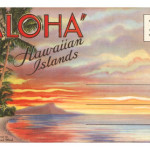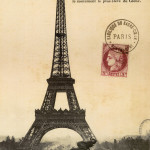I’ve always been fascinated by the history of postal stamps. After all, they form an integral part of our lives. From sending out important parcels to sending birthday cards to loved ones, stamps have been one of the most common ways of distributing mail. In this blog post, I’ll take you through a brief history of postal stamps, from their early history to the rise of digital stamps.
Introduction
Postal stamps have been around since the early 19th century, when the first adhesive stamp was introduced in the UK in 1840. Over the years, stamps have evolved from being mere tools for postage to becoming an important part of our culture. They’re now used in many different ways, such as for collecting, decorating, and even trading.
Early History of Postal Stamps
The early history of postal stamps began in the mid-19th century when the Penny Black was introduced in the UK. It was the world’s first adhesive postage stamp and it was used to pay for the delivery of a letter. The Penny Black quickly became popular and other countries soon followed suit, introducing their own stamps.
The second half of the 19th century saw a dramatic shift in the way postal stamps were used. At this time, stamps were used to pay for not only the delivery of letters but also the delivery of parcels and packages. This was an important development as it allowed people to send items that were too large to fit in a standard envelope.
 ?
?
Photo by OpenClipart-Vectors on Pixabay
The Emergence of World Stamps
With the emergence of world stamps, people were able to send mail across international borders. This was a huge advancement in the world of postage as it allowed people to communicate with each other in ways that were previously impossible.
In the late 19th century, the United States Postal Service (USPS) began producing stamps with their own designs. This allowed them to differentiate their stamps from those of other countries, making it easier for people to identify where a letter or parcel had originated from.
The Development of Postcards
The development of postcards in the late 19th century was another important step forward in the history of postal stamps. Postcards allowed people to send short messages to friends and family for a fraction of the cost of a full letter. This was a great way to stay in touch with people and it quickly became a popular form of communication.
Postcards were often decorated with colorful illustrations and images, making them more attractive and interesting. This made them more desirable to collectors and soon postcard collecting became a popular hobby.
The Rise of Digital Stamps
With the rise of digital technology in the late 20th century, digital stamps began to emerge. These allowed people to send electronic messages with virtual stamps, eliminating the need for physical stamps. This was a great advancement in the world of postage as it allowed people to send messages quickly and easily without having to wait for the mail to arrive.
Digital stamps also made it easier for people to send secure messages as they could be encrypted. This was a great way to ensure that messages were sent securely and privately.
Popular Old Postage Stamps
There are many old postage stamps that are popular with collectors. Some of the most popular stamps include the Penny Black, the Inverted Jenny, and the Hawaiian Missionary stamps. These stamps are highly sought after by collectors due to their rarity and historical significance.
The Penny Black was the world’s first adhesive postage stamp and it was used in the UK from 1840 to 1841. The Inverted Jenny is a United States airmail stamp from 1918 that features a misprinted image of a plane upside down. The Hawaiian Missionary stamps were issued by the Kingdom of Hawaii between 1851 and 1894.
How to Collect Old Postage Stamps
Collecting old postage stamps can be a fun and rewarding hobby. To get started, you’ll need to find a reputable dealer or auction house where you can purchase stamps. You’ll also need to research the stamps you’re interested in to ensure that they’re genuine and in good condition.
Once you’ve gathered all the necessary information, you’ll need to decide which stamps you want to collect. Many collectors focus on a particular theme, such as the Penny Black or the Inverted Jenny, while others focus on a specific country or region.
Once you’ve decided what stamps you want to collect, you’ll need to find a way to store them. You can purchase special albums or cases to keep your stamps safe and secure. You’ll also need to make sure that your stamps are properly labeled and organized so that you can easily identify them.
Benefits of Collecting World Stamps
Collecting world stamps can be a great way to learn about different cultures and countries. You’ll be able to see how different countries have used stamps to communicate with each other and you’ll also be able to appreciate the artistry that goes into creating stamps.
Collecting stamps can also be a great way to make money. Many rare stamps are worth a lot of money and they can be a great investment. Plus, if you find a stamp that is particularly rare or valuable, you may be able to sell it for a profit.
Postal stamps have been around for centuries and they’ve evolved from being mere tools for postage to becoming an important part of our culture. From the early history of postal stamps to the rise of digital stamps, stamps have come a long way and they’re now used in many different ways. Whether you’re interested in collecting old postage stamps or just want to learn more about the history of stamps, there’s a lot to explore. So, get out there and start collecting!






